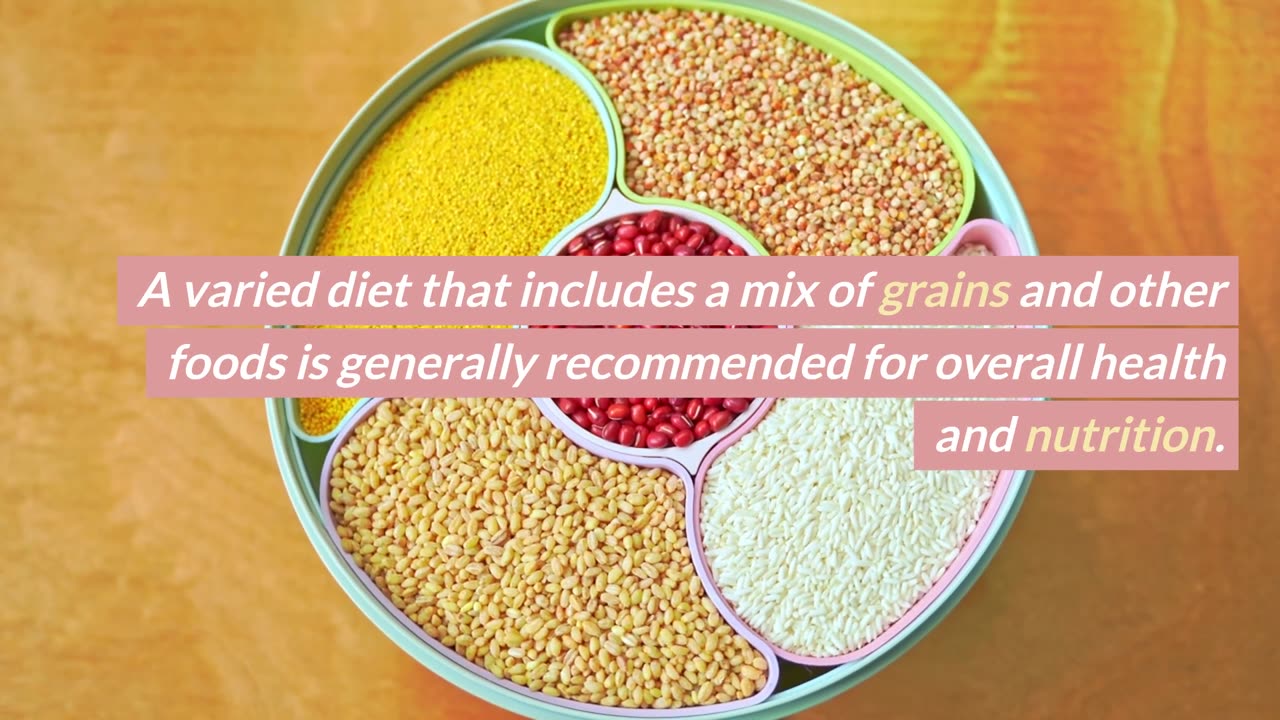Premium Only Content

rice ingredients and health pros and cons
Grain: Rice is a type of grain, specifically a cereal grain.
Varieties: There are many different varieties of rice, such as white rice, brown rice, basmati rice, jasmine rice, and more.
Cooking: Rice is a staple food in many cultures and is often prepared through various cooking methods, including boiling, steaming, frying, and baking.
Nutrition: Rice is a source of carbohydrates and provides energy. It can also be a source of vitamins and minerals, depending on the type and preparation.
Cultivation: Rice is grown in flooded fields called paddies or in dry fields, and it requires specific conditions for successful cultivation.
Asia: Rice is a major staple crop in many Asian countries, and it has a significant cultural and economic impact in the region.
Harvest: Rice is typically harvested in the fall, and the process involves cutting, threshing, and drying the grains.
Global Production: China and India are the largest producers of rice in the world, followed by countries like Indonesia, Bangladesh, and Vietnam.
Rice Dishes: Rice is used in various dishes worldwide, such as sushi, paella, risotto, biryani, and more.
Rice Industry: The rice industry includes aspects like milling, packaging, and distribution of rice products.
Rice Varieties: Different rice varieties have distinct flavors, textures, and culinary uses. Examples include long-grain rice, short-grain rice, and wild rice.
Rice in History: Rice has a long history and has been a dietary staple for thousands of years in many parts of the world.
Rice Bran: Rice bran is a byproduct of rice milling and is used in various applications, including in cooking oil and animal feed.
Rice Production Methods: There are various methods of rice production, including conventional farming and organic farming.
Rice Imports and Exports: Many countries import and export rice to meet their domestic needs and engage in international trade.
Rice in Cuisine: Rice is a versatile ingredient used in a wide range of cuisines, from Asian to Latin American and beyond.
Health Benefits: Rice can be a part of a healthy diet when consumed in moderation, as it is gluten-free and low in fat.
Rice in Religion and Culture: In some cultures, rice has significant religious and cultural importance, often featuring in ceremonies and rituals.
Rice Storage: Proper storage of rice is essential to prevent spoilage and maintain its quality over time.
Rice as a Side Dish: Rice is commonly served as a side dish or accompaniment to various main courses.
-
 LIVE
LIVE
Slightly Offensive
3 hours agoCandace REDPILLS the Masses in BOMBSHELL Theo Von Interview | Guest: Shane Cashman
1,138 watching -
 LIVE
LIVE
megimu32
3 hours agoON THE SUBJECT: IRL Streamers Attacked & Nostalgic Animal Movies That Made Us Cry
354 watching -
 1:00:54
1:00:54
The Tom Renz Show
6 hours agoMore Epstein/FBI, a Scary Trade War, & the Dem Echo Chamber
829 -
 40:43
40:43
Kimberly Guilfoyle
7 hours agoDems Double Down on Delusion-Why? Live with Tony Kinnett & Bo French | Ep.202
61.7K30 -
 1:28:42
1:28:42
Redacted News
5 hours agoBREAKING! SOMETHING BIG IS HAPPENING IN EUROPE ALL OUT WAR IS COMING AGAINST RUSSIA, TRUMP FURIOUS
108K262 -
 47:50
47:50
Candace Show Podcast
6 hours agoBREAKING: Judge Makes Statement Regarding Taylor Swift's Text Messages. | Candace Ep 155
94.3K104 -
 DVR
DVR
Josh Pate's College Football Show
3 hours agoCFB’s Most Hated Teams | FSU & Clemson Future | Big Ten Win Totals | Star Rankings Overrated?
5.76K -
 1:33:47
1:33:47
CatfishedOnline
4 hours agoGoing Live With Robert - Weekly Recap
19.4K -
 55:18
55:18
LFA TV
1 day agoEurope’s Sudden Turn Against America | TRUMPET DAILY 3.6.25 7PM
25.5K3 -
 4:21
4:21
Tundra Tactical
4 hours ago $1.38 earnedPam Bondi MUST Enforce Due Process NOW!
18.4K1